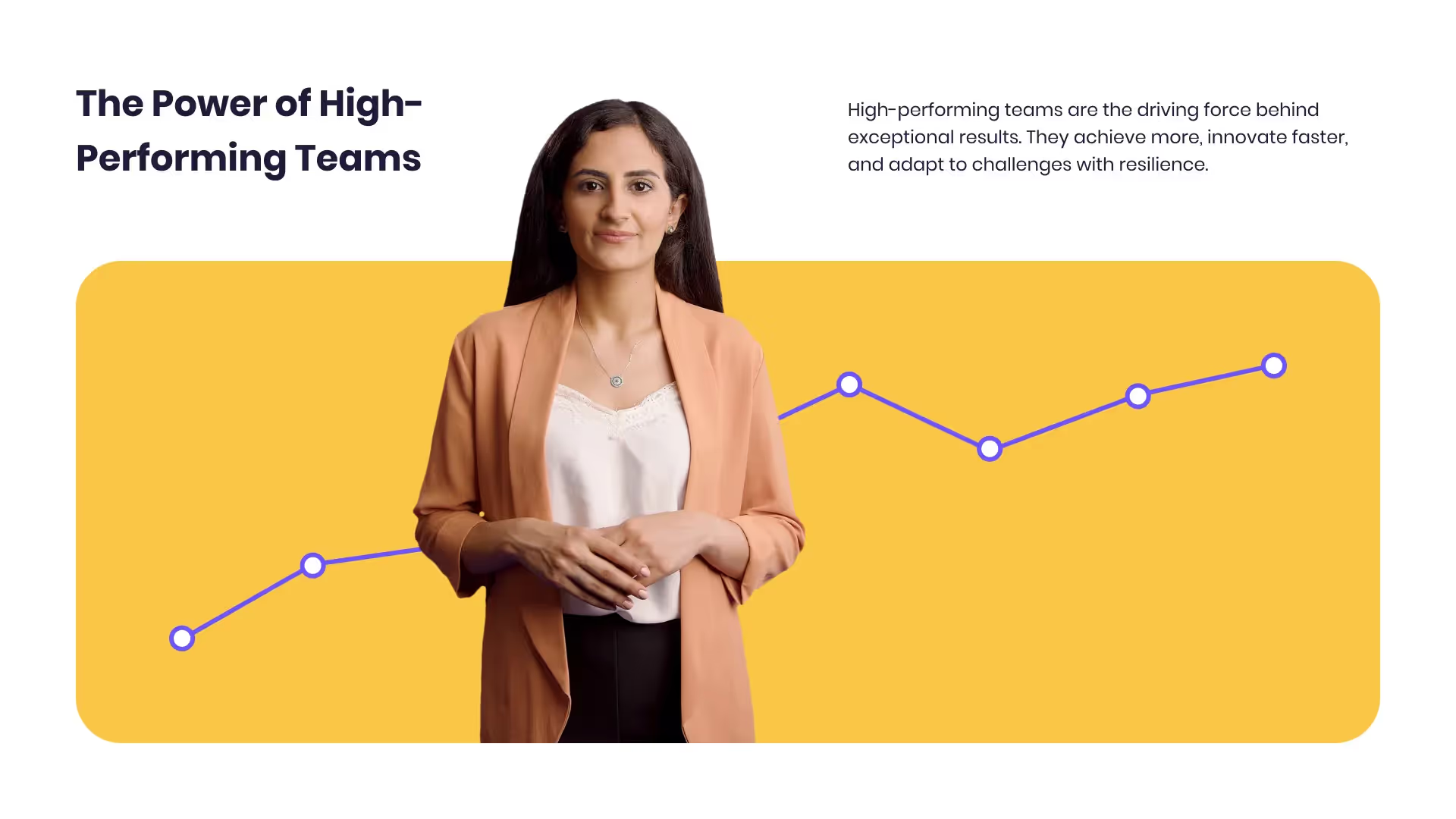.avif)
Want a personalised avatar?
Instant Avatars can be recorded using your phone or camera, and created in under a minute. These avatars are quick and easy to create, and they keep your original background and movements.

Vertical Video Editor: Transform Your Mobile Content Strategy


Understanding the Rise of Vertical Video Editing
In recent years, vertical video has become a dominant format, largely driven by the proliferation of mobile devices and platforms like Instagram, TikTok, and Snapchat. Unlike traditional horizontal videos, vertical videos are designed to be viewed in portrait mode, making them ideal for mobile-first consumption. For business professionals and learning & development teams, understanding the nuances of vertical video editing is essential to capitalize on this trend and engage audiences effectively.
The shift towards vertical video is not just a passing phase but a reflection of how people consume content on the go. With statistics showing that over 75% of video consumption now happens on mobile devices, adapting to vertical video is not just beneficial; it's crucial. This transformation has paved the way for the development of sophisticated vertical video editors designed to streamline the video creation process and enhance the quality of mobile-first video content.
For corporate teams, especially those involved in training, onboarding, and marketing, vertical video offers a unique way to convey information in a concise and visually appealing manner. It allows teams to create engaging content that resonates with their audience, making learning and communication more effective. In this blog post, we will explore the ins and outs of vertical video editing, including practical use cases, step-by-step guides, industry insights, and solutions to common challenges. By the end, you'll have a comprehensive understanding of how to leverage vertical video editors to enhance your business's video strategy.
The Benefits of Vertical Video Editing
Vertical video editing offers several advantages that make it an attractive option for businesses looking to enhance their video content strategy. Here are some of the key benefits:
By leveraging these benefits, businesses can create compelling video content that not only captures attention but also drives action. Whether it's for training, marketing, or internal communication, vertical video editors enable teams to produce professional-quality videos quickly and efficiently.
Step-by-Step Guide to Using a Vertical Video Editor
Creating vertical videos can seem daunting, but with the right tools and guidance, it becomes a streamlined process. Here's a step-by-step guide to help you get started with a vertical video editor:
By following these steps, you can create engaging and professional vertical videos that resonate with your audience and fulfill your business objectives.
Real-World Examples and Case Studies
To illustrate the effectiveness of vertical video editors, let's explore a few real-world examples:
Case Study 1: A Healthcare Company
A healthcare company used a vertical video editor to create training videos for their staff. By producing short, engaging videos, they were able to improve information retention and reduce training time by 30%. The vertical format was ideal for mobile viewing, allowing staff to access training materials on their smartphones during breaks.
Case Study 2: A Tech Firm
A tech firm leveraged vertical video to launch a new product. They created a series of vertical videos to highlight key features, resulting in a 40% increase in product inquiries. The vertical format made it easier for viewers to engage with the content on social media, driving higher engagement rates.
These examples demonstrate how vertical video editors can be used across various industries to achieve specific business goals. By adapting to this format, businesses can effectively communicate their message and increase their reach.
Best Practices, Tips, and Strategies
To maximize the impact of your vertical videos, consider these best practices:
By implementing these strategies, you can create vertical videos that not only capture attention but also deliver your message effectively to your audience.
Common Challenges and Detailed Solutions
While vertical video editing offers numerous benefits, it also comes with its own set of challenges. Here are some common challenges and solutions:
By understanding these challenges and applying the right solutions, you can overcome obstacles and create impactful vertical videos for your business needs.
Industry Insights and Current Trends
The rise of vertical video editing is part of a broader trend towards mobile-first content consumption. As more people rely on smartphones for their daily media intake, vertical videos are becoming the preferred format for both creators and viewers. Industry insights suggest that this trend will continue to grow, with vertical video becoming a staple in digital marketing strategies.
Current trends also show an increase in the use of AI-powered tools in video editing. These tools, like Colossyan, streamline the creation process, making it easier for non-technical teams to produce professional-quality videos quickly. AI integration also allows for features like automatic captioning, translations, and lip-syncing, further enhancing the effectiveness of vertical videos.
By staying informed about these trends, businesses can adapt their strategies to remain competitive and engage their audience in meaningful ways.
Conclusion
The world of video content is evolving, and vertical video is at the forefront of this transformation. By understanding and utilizing vertical video editors, businesses can create engaging, mobile-friendly content that resonates with their audience. The benefits of vertical video editing extend beyond just aesthetics; they offer practical solutions for training, marketing, and communication in today's fast-paced digital environment.
As highlighted in this blog post, the ability to quickly create high-quality vertical videos can significantly impact your business's success. Whether you're looking to enhance employee training, launch a new product, or communicate effectively with your audience, vertical video editors provide the tools and flexibility you need to achieve your goals.
By embracing this format and leveraging platforms like Colossyan, businesses can unlock new opportunities for growth and engagement. As the trend towards mobile-first content continues to rise, vertical video will remain a crucial component of any successful digital strategy.

Networking and Relationship Building
Use this template to produce videos on best practices for relationship building at work.

Developing high-performing teams
Customize this template with your leadership development training content.

Course Overview template
Create clear and engaging course introductions that help learners understand the purpose, structure, and expected outcomes of your training.
Frequently asked questions
What is a vertical video editor?

A vertical video editor is a tool designed specifically to create and edit videos in a vertical format, which is optimized for mobile viewing. These editors provide features that cater to the unique aspects of vertical video production, such as aspect ratio adjustments and mobile-friendly templates.
Why should businesses use vertical video editors?

Businesses should use vertical video editors to create content that is more engaging for mobile users. With a significant portion of video consumption happening on mobile devices, vertical videos offer a format that is more natural and immersive for viewers, leading to higher engagement and better communication.
How can vertical video editors improve training programs?

Vertical video editors can improve training programs by allowing businesses to create concise, engaging, and accessible training materials. The vertical format is ideal for mobile learning, enabling employees to access training content anytime and anywhere, which can lead to improved information retention and efficiency.
What are some common features of vertical video editors?

Common features of vertical video editors include easy-to-use interfaces, customizable templates, aspect ratio adjustments, text and graphic overlays, transitions, and integration with social media platforms for easy sharing and distribution.
Can vertical video editors be used for marketing purposes?

Yes, vertical video editors are highly effective for marketing purposes. They allow businesses to create visually appealing and engaging content that resonates with mobile audiences, making them ideal for social media marketing, product launches, and promotional campaigns.
Didn’t find the answer you were looking for?
















%20(1).avif)
.webp)


